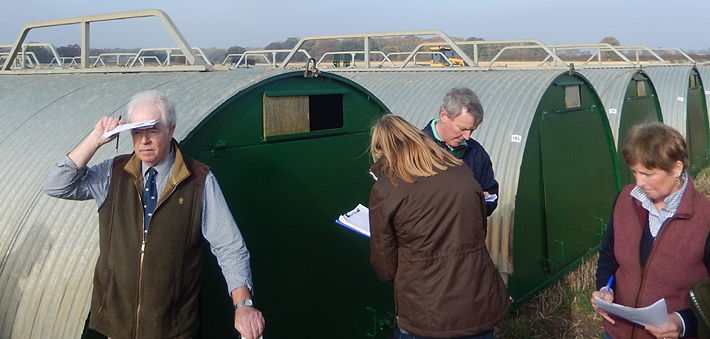Pig prices on both sides of the Channel seem to be levelling out, after recent gains, with the latest SPP only going up by a gnat’s whisker of 0.34p to stand at 198.06p, and on the other side of the Channel, the influential German producer price is reported to have stood on at €2.05, which in real money works out at 171p/kg.
In both cases, the gap between production costs and pig values remains as wide as ever and the ongoing conflict in Ukraine is doing no one in the pig industry at home or abroad any favours.
UK weekly contribution prices also continue to follow the stand on trend and remain between 178p/kg at the bottom end and 190p/kg at the top, but they are still well behind the SPP.
Spot bacon prices remain fickle with reports still being received of some but not all of the larger players cutting back on their contract numbers in many cases due to ongoing staff shortages, although reports of more migrant workers on their way to the UK might help to take the pressure off this sector to some extent.
In the meantime spot bacon prices remain in the doldrums in around 180p – 190p/kg with only lighter weights at more than this.
Cull Sows
One shaft of sunlight has been the continuing improvement in UK cull sow values which have risen by another 5p/kg this week thanks in part to better demand as well as a stronger Euro, which traded today with 86.35p compared with 84.60p seven days earlier.
As a result, most cull sows traded in the 72p-76p/kg band and if the present cull price recovery continues, it will not be long before they hit 80p/kg, which is a significant improvement in their value at the start of the year when it was hard to get any more than 30p/kg – but as they say, two wrongs don’t make a right!
Weaners
The weaner market remains as fickle as ever with a huge gap between the top and the bottom and although the latest AHDB 7kg ex farm weaner average has now been published at £48.65/head, this mainly relates to contracted weaners.
Spot weaners continue to suffer from a chill wind with the lethal combination of pig prices unable to keep up with production costs and as a result it is very difficult to persuade weaner buyers to emerge from the shadows until they have a clearer idea of what the industry has to face in the months ahead.
Feed Market Trends
Although there are positive reports that 55 grain ships have now left Ukraine via the grain corridor, unfortunately winter wheat plantings in Ukraine are currently reported to be 30-40% down when compared with a year earlier.
Despite reports of Russia having a record wheat crop, grain prices are still holding at unaffordable levels as far as pig producers are concerned.
On this side of the Channel the ex farm UK spot feed wheat weekly average has remained virtually unchanged at £250.80/t and futures prices are also far too high for comfort with feed wheat for October delivery at £266/t and £256/t for September 2023.
Feed barley prices are also remaining bullish with October delivery quoted at £251/t and for September 2023 at £241/t.
Protein values are also virtually unchanged with Hipro soya for October delivery traded at £500/t and for May – October 2023 at £458/t. Rapemeal remains expensive at £293/t for October delivery and £317/t for November – January 2023.
And finally, one piece of overdue good news is the announcement that with immediate effect new restrictions are being introduced on the movement of all pork and pork products into Great Britain from EU and EFTA States.
According to the NPA, this will strengthen the rules governing pork and pork product imports in a bid to protect the UK pig herd from African Swine Fever, which is currently hitting producers hard in many European countries including Germany and Italy.
Anything that can be done to limit pig meat imports and encourage consumers to support the UK pig industry must be in everyone’s best interest in the longer term.
All the industry can now do is to wish and hope that we stay clear of the scourge of ASF or any other killer diseases.




